Exploring Symbiosis: Innovatively Unveiling the Interplay between the Cold Chain Logistics of Fresh Agricultural Products and the Ecological Environment
Abstract
1. Introduction
2. Research Design
2.1. Selection of Evaluation Indicators for the Development of Cold Chain Logistics for Agricultural Products
2.2. Indicator Data Sources and Processing
3. Methodology
3.1. Random Forest Regression Model
3.2. XGBoost Model
3.3. Pearson’s Correlation Coefficient
3.4. Generalized Additive Model
4. Results
4.1. Relationship between the Level of Development of Cold Chain Logistics of Fresh Agricultural Products and the Level of Development of the Ecological Environment
4.1.1. Random Forest Regression Algorithm
4.1.2. XGBoost Algorithm
4.2. Relationships between the Cold Chain Logistics of Fresh Agricultural Products and Ecological Environmental Factors
4.3. Study on the Influencing Factors of the Cold Chain Logistics of Fresh Agricultural Products on the Ecological Environment
4.3.1. Model Preprocessing and Testing
4.3.2. Analysis of the Results Based on GAM
5. Conclusions
- Supporting the construction of cold chain logistics facilities and equipment. The construction of cold chain logistics facilities and equipment should be improved by focusing on refrigerated vehicles and cold rooms, and these facilities should comply with the requirements of construction and operation standards to provide a stable storage environment for fresh agricultural products. At the same time, it is necessary to pay attention to equipment supervision and to comprehensively consider the economic benefits and consumption outputs of facilities and equipment, such as carbon emissions and waste emissions, as well as the timely replacement of obsolete equipment.
- Scientific and technological innovation should be strengthened in low-pollution cold chain logistics. Innovations in low-pollution cold storage, transportation, temperature monitoring, and packaging technologies should be encouraged. Specifically, enterprises can adopt biodegradable and environmentally friendly packaging, new energy-saving temperature-controlled transportation vehicles, new energy sources to provide energy technology, and the re-creation of recycled materials. In addition, the training of such innovative cold chain logistics personnel should be strengthened.
- The marketization of cold-chain logistics for fresh agricultural products should be promoted by moderately increasing the number of participating entities, promoting market competition, and sharing the social responsibility of corporate environmental protection. The construction of a green certification system can be carried out to certify and reward enterprises that comply with environmental protection standards, through which the images of enterprises can be upgraded and their market competitiveness enhanced. In addition, associations and enterprises are encouraged to expand the scope of service business, explore and promote the integrated service model, and realize the efficient management of fresh agricultural products and cold chain logistics. Thus, service quality will be improved and the market scale will be expanded.
- The formulation of policies on green fresh produce cold chain logistics should be strengthened, and through policy guidance and standard-setting, the main parties involved in fresh produce cold chain logistics can be encouraged to maintain the most favorable practices for the ecological environment in the face of market competition or consumption growth. At the same time, the transportation network of fresh produce cold chain logistics should be optimized so as not to blindly expand the roads, and the empty rate of transportation vehicles should be reduced by decreasing the rate of transportation vehicles, etc., under the condition of maintaining an appropriate freight turnover. This will reduce pollution of the environment.
Author Contributions
Funding
Institutional Review Board Statement
Data Availability Statement
Conflicts of Interest
References
- Zhang, Y.; Li, C.; Yao, S. Spatiotemporal evolution characteristics of China’s cold chain logistics resources and agricultural product using remote sensing perspective. Eur. J. Remote Sens. 2021, 54, 275–283. [Google Scholar] [CrossRef]
- Yu, Y.; Xiao, T. Analysis of cold-chain service outsourcing modes in a fresh agri-product supply chain. Transport. Res. Part E Log. Transport. Rev. 2021, 148, 102264. [Google Scholar] [CrossRef]
- Zhang, Y.; Fan, X.; Ma, Y.; Sun, Y. Spatial impacts of cold chain logistics for fresh agri-products on carbon emissions. Transp. Res. Part D Transp. Environ. 2022, 113, 103525. [Google Scholar] [CrossRef]
- White, A.; Lockyer, S. Removing plastic packaging from fresh produce—What’s the impact? Nutr. Bull. 2020, 45, 35–50. [Google Scholar] [CrossRef]
- Schwarz, A.E.; Lensen, S.M.C.; Langeveld, E.; Parker, L.A.; Urbanus, J.H. Plastics in the global environment assessed through material flow analysis, degradation and environmental transportation. Sci. Total Environ. 2023, 875, 162644. [Google Scholar] [CrossRef] [PubMed]
- Wu, D.; Zhou, D.; Zhu, Q.; Wu, L. Industrial structure optimization under the rigid constraint of carbon peak in 2030: A perspective from industrial sectors. Environ. Impact Assess. Rev. 2023, 101, 107140. [Google Scholar] [CrossRef]
- Zhang, X.R. Super cold chain-a high quality, energy-efficient, and environment-friendly method. Int. J. Energy Res. 2017, 41, 1225–1228. [Google Scholar] [CrossRef]
- Heard, B.R.; Miller, S.A. Critical Research Needed to Examine the Environmental Impacts of Expanded Refrigeration on the Food System. Environ. Sci. Technol. 2016, 50, 12060–12071. [Google Scholar] [CrossRef] [PubMed]
- Khan, A.U.; Ali, Y. Sustainable supplier selection for the cold supply chain (CSC) in the context of a developing country. Environ. Dev. Sustain. 2021, 23, 13135–13164. [Google Scholar] [CrossRef]
- Fichtinger, J.; Ries, J.M.; Grosse, E.H.; Baker, P. Assessing the environmental impact of integrated inventory and warehouse management. Int. J. Prod. Econ. 2015, 170, 717–729. [Google Scholar] [CrossRef]
- Chauhan, C.; Dhir, A.; Akram, M.U.; Salo, J. Food loss and waste in food supply chains. A systematic literature review and framework development approach. J. Clean. Prod. 2021, 295, 126438. [Google Scholar] [CrossRef]
- Bai, Q.; Gong, Y.; Jin, M.; Xu, X. Effects of carbon emission reduction on supply chain coordination with vendor-managed deteriorating product inventory. Int. J. Prod. Econ. 2019, 208, 83–99. [Google Scholar] [CrossRef]
- Stellingwerf, H.M.; Kanellopoulos, A.; van der Vorst, J.G.A.J.; Bloemhof, J.M. Reducing CO2 emissions in temperature-controlled road transportation using the LDVRP model. Transport. Res. Part D Transport Environ. 2018, 58, 80–93. [Google Scholar] [CrossRef]
- Sun, X.; Gao, L.; Lan, Y. Analysis of the efficiency of China’s cold chain logistics enterprises from the perspective of green supply chain. IOP Conf. Ser. Earth Environ. Sci. 2019, 440, 032140. [Google Scholar] [CrossRef]
- Amini, M.H.; Kargarian, A.; Karabasoglu, O. ARIMA-based decoupled time series forecasting of electric vehicle charging demand for stochastic power system operation. Electr. Power Syst. Res. 2016, 140, 378–390. [Google Scholar] [CrossRef]
- Acquaye, A.; Feng, K.; Oppon, E.; Salhi, S.; Ibn-Mohammed, T.; Genovese, A.; Hubacek, K. Measuring the environmental sustainability performance of global supply chains: A multi-regional input-output analysis for carbon, sulphur oxide and water footprints. J. Environ. Manag. 2017, 187, 571–585. [Google Scholar] [CrossRef]
- Gardas, B.B.; Raut, R.D.; Narkhede, B. Evaluating critical causal factors for post-harvest losses (PHL) in the fruit and vegetables supply chain in India using the DEMATEL approach. J. Clean. Prod. 2018, 199, 47–61. [Google Scholar] [CrossRef]
- Sadollah, A.; Nasir, M.; Geem, Z.W. Sustainability and Optimization: From Conceptual Fundamentals to Applications. Sustainability 2020, 12, 2027. [Google Scholar] [CrossRef]
- Sun, S.K.; Lu, Y.J.; Gao, H.; Jiang, T.T.; Du, X.Y.; Shen, T.X.; Wu, P.T.; Wang, Y.B. Impacts of food wastage on water resources and environment in China. J. Clean. Prod. 2018, 185, 732–739. [Google Scholar] [CrossRef]
- Fahimnia, B.; Sarkis, J.; Davarzani, H. Green supply chain management: A review and bibliometric analysis. Int. J. Prod. Econ. 2015, 162, 101–114. [Google Scholar] [CrossRef]
- Babagolzadeh, M.; Shrestha, A.; Abbasi, B.; Zhang, Y.; Woodhead, A.; Zhang, A. Sustainable cold supply chain management under demand uncertainty and carbon tax regulation. Transp. Res. Part D Transp. Environ. 2020, 80, 102245. [Google Scholar] [CrossRef]
- Zaman, K.; Shamsuddin, S. Green logistics and national scale economic indicators: Evidence from a panel of selected European countries. J. Clean. Prod. 2017, 143, 51–63. [Google Scholar] [CrossRef]
- Zhao, Y.; Zhang, X.; Xu, X. Application and research progress of cold storage technology in cold chain transportation and distribution. J. Therm. Anal. Calorim. 2019, 139, 1419–1434. [Google Scholar] [CrossRef]
- Islam, S.; Manning, L.; Cullen, J.M. A hybrid traceability technology selection approach for sustainable food supply chains. Sustainability 2021, 13, 9385. [Google Scholar] [CrossRef]
- Bassi, F. European consumers’ attitudes towards the environment and sustainable behavior in the market. Sustainability 2023, 15, 1666. [Google Scholar] [CrossRef]
- Liao, J.; Tang, J.; Vinelli, A.; Xie, R. A hybrid sustainability performance measurement approach for fresh food cold supply chains. J. Clean. Prod. 2023, 398, 136466. [Google Scholar] [CrossRef]
- Liu, B.; Li, J.; Chen, A.; Theodorakis, P.E.; Zhu, Z.; Yu, J. Selection of the cold logistics model based on the carbon footprint of fruits and vegetables in China. J. Clean. Prod. 2022, 334, 130251. [Google Scholar]
- Jia, X. Research on the optimization of cold chain logistics distribution path of agricultural products E-commerce in urban ecosystem from the perspective of carbon neutrality. Front. Ecol. Evol. 2022, 10, 966111. [Google Scholar] [CrossRef]
- Golestani, M.; Moosavirad, S.H.; Asadi, Y.; Biglari, S. A Multi-Objective Green Hub Location Problem with Multi Item-Multi Temperature Joint Distribution for Perishable Products in Cold Supply Chain. Sust. Prod. Consump. 2021, 27, 1183–1194. [Google Scholar] [CrossRef]
- Du, B.; Liu, Q.; Li, G. Coordinating leader-follower supply chain with sustainable green technology innovation on their fairness concerns. Int. J. Environ. Res. Public Health 2017, 14, 1357. [Google Scholar] [CrossRef] [PubMed]
- Shi, Y.; Lin, Y.; Lim, M.K.; Tseng, M.-L.; Tan, C.; Li, Y. An intelligent green scheduling system for sustainable cold chain logistics. Expert Syst. Appl. 2022, 209, 118378. [Google Scholar] [CrossRef]
- Dukkanci, O.; Peker, M.; Kara, B.Y. Green hub location problem. Transport. Res. Part E Log. Transport. Rev. 2019, 125, 116–139. [Google Scholar] [CrossRef]
- Khan, S.A.R.; Sharif, A.; Golpîra, H.; Kumar, A. A green ideology in Asian emerging economies: From environmental policy and sustainable development. Sust. Dev. 2019, 27, 1063–1075. [Google Scholar] [CrossRef]
- Zhang, W.; Zhang, X.; Zhang, M.; Li, W. How to Coordinate Economic, Logistics and Ecological Environment? Evidences from 30 Provinces and Cities in China. Sustainability 2020, 12, 1058. [Google Scholar] [CrossRef]
- Han, J.W.; Zhao, C.J.; Qian, J.P.; Ruiz-Garcia, L.; Zhang, X. Numerical modeling of forced-air cooling of palletized apple: Integral evaluation of cooling efficiency. Int. J. Refrig. 2018, 89, 131–141. [Google Scholar] [CrossRef]
- He, Z.; Chen, P.; Liu, H.; Guo, Z. Performance measurement system and strategies for developing low-carbon logistics: A case study in China. J. Clean. Prod. 2017, 156, 395–405. [Google Scholar] [CrossRef]
- Kumar, A.; Mangla, S.K.; Kumar, P.; Karamperidis, S. Challenges in perishable food supply chains for sustainability management: A developing economy perspective. Bus. Strateg. Environ. 2020, 29, 1809–1831. [Google Scholar] [CrossRef]
- Sharma, A.; Kumar, R. A Framework for Risk-Energy Aware Service-Level Agreement Provisioning (RESP) for Computing the Quickest Path. J. Comput. Netw. Commun. 2019, 2019, 4109453. [Google Scholar] [CrossRef]
- Ofori, E.K.; Li, J.; Gyamfi, B.A.; Opoku-Mensah, E.; Zhang, J. Green industrial transition: Leveraging environmental innovation and environmental tax to achieve carbon neutrality. Expanding on STRIPAT model. J. Environ. Manag. 2023, 343, 118121. [Google Scholar] [CrossRef] [PubMed]
- Chen, Q.; Qian, J.; Yang, H.; Wu, W. Sustainable food cold chain logistics: From microenvironmental monitoring to global impact. Compr. Rev. Food Sci. Food Saf. 2022, 21, 4189–4209. [Google Scholar] [CrossRef] [PubMed]
- El Mahrad, B.; Newton, A.; Icely, J.D.; Kacimi, I.; Abalansa, S.; Snoussi, M. Contribution of remote sensing technologies to a holistic coastal and marine environmental management framework: A review. Remote Sens. 2020, 12, 2313. [Google Scholar] [CrossRef]
- Dai, J.; Khan, Y.A. Ecological environment pressure state and response system for coupling coordinate development: An application on china data. Environ. Sci. Pollut. Res. 2023, 30, 25682–25690. [Google Scholar] [CrossRef] [PubMed]
- Wang, L.; Xiang, W.; Liu, J.; Wu, X. Analysis of cold chain logistics development of fresh agricultural products based on grey correlation model. J. Lanzhou Inst. Technol. 2021, 28, 85–91. [Google Scholar]
- Abulimiti, S.; Gumur, G. Research on the situation and development path of cold chain logistics of agricultural products in Xinjiang. Price Mon. 2018, 75–78. [Google Scholar]
- Wu, D.; Li, J.; Cui, J.; Hu, D. Research on the Time-Dependent Vehicle Routing Problem for Fresh Agricultural Products Based on Customer Value. Agriculture 2023, 13, 681. [Google Scholar] [CrossRef]
- Shen, L.Y.; Yang, Y.; Bao, H.J.; Du, X.Y.; He, H.M. Residents’ perceptions on the urban resources environment in Chinese large cities. Environ. Impact Assess. Rev. 2023, 100, 107080. [Google Scholar] [CrossRef]
- Li, H.; Jiao, Y.; Li, L.; Jiao, X. Research progress and trend of effects of organophosphorus pesticides on aquatic organisms in the past decade. Comp. Biochem. Physiol. C Toxicol. Pharmacol. 2023, 271, 109673. [Google Scholar] [CrossRef] [PubMed]
- Han, Z.; Leng, Y.; Sun, Z.; Lin, H.; Wang, J.; Zou, J. Machine learning-based estimation and mitigation of nitric oxide emissions from Chinese vegetable fields. Environ. Pollut. 2024, 343, 123174. [Google Scholar] [CrossRef] [PubMed]
- Fan, X.; Zhang, Y.; Ma, Y.; Zhao, C.; Liang, B.; Chu, H. Research on the sustainable development of agricultural product supply chain in three northeast provinces in China. Front. Public Health 2023, 10, 1007486. [Google Scholar] [CrossRef] [PubMed]
- Ao, Y.; Li, H.; Zhu, L.; Ali, S.; Yang, Z. The linear random forest algorithm and its advantages in machine learning assisted logging regression modeling. J. Petrol. Sci. Eng. 2019, 174, 776–789. [Google Scholar] [CrossRef]
- Wang, X.; Zhang, L.; Li, J.; Sun, Y.; Tian, J.; Han, R. Research on improved XGBoost method based on genetic algorithm and random forest. Comput. Sci. 2020, 47, 454–458, 463. [Google Scholar]
- Srivastava, R. Karl Pearson and “Applied” Statistics. Resonance J. Sci. Educ. 2023, 28, 183–189. [Google Scholar] [CrossRef]
- Mullah, M.A.S.; Hossain, Z.; Benedetti, A. Comparing estimation approaches for generalized additive mixed models with binary outcomes. J. Stat. Comput. Sim. 2023, 93, 3362–3381. [Google Scholar] [CrossRef]
- Nikolaisen, M.; Cornulier, T.; Hillier, J.; Smith, P.; Albanito, F.; Nayak, D. Methane emissions from rice paddies globally: A quantitative statistical review of controlling variables and modelling of emission factors. J. Clean. Prod. 2023, 409, 137245. [Google Scholar] [CrossRef]
- Weng, L.; Dou, W.; Chen, Y. Study on the Coupling Effect of Agricultural Production, Road Construction, and Ecology: The Case for Cambodia. Agriculture 2023, 13, 780. [Google Scholar] [CrossRef]
- Wang, G.; Zhang, Z.; Li, S.; Shin, C. Research on the influencing factors of sustainable supply chain development of agri-food products based on cross-border live-streaming e-commerce in China. Foods 2023, 12, 3323. [Google Scholar] [CrossRef]
- Zuo, D.; Liang, Q.; Zhan, S.; Huang, W.; Yang, S.; Wang, M. Using energy consumption constraints to control the freight transportation structure in China (2021–2030). Energy 2023, 262, 125512. [Google Scholar] [CrossRef]
- Ma, R.; Zhu, S.; Liu, F. The Impact of the Patent System on the Timing of Technology Licensing in China: Theory and Evidence from Patent Disclosure and Grant Delays. J. Eng. Technol. Manag. 2021, 61, 101631. [Google Scholar] [CrossRef]



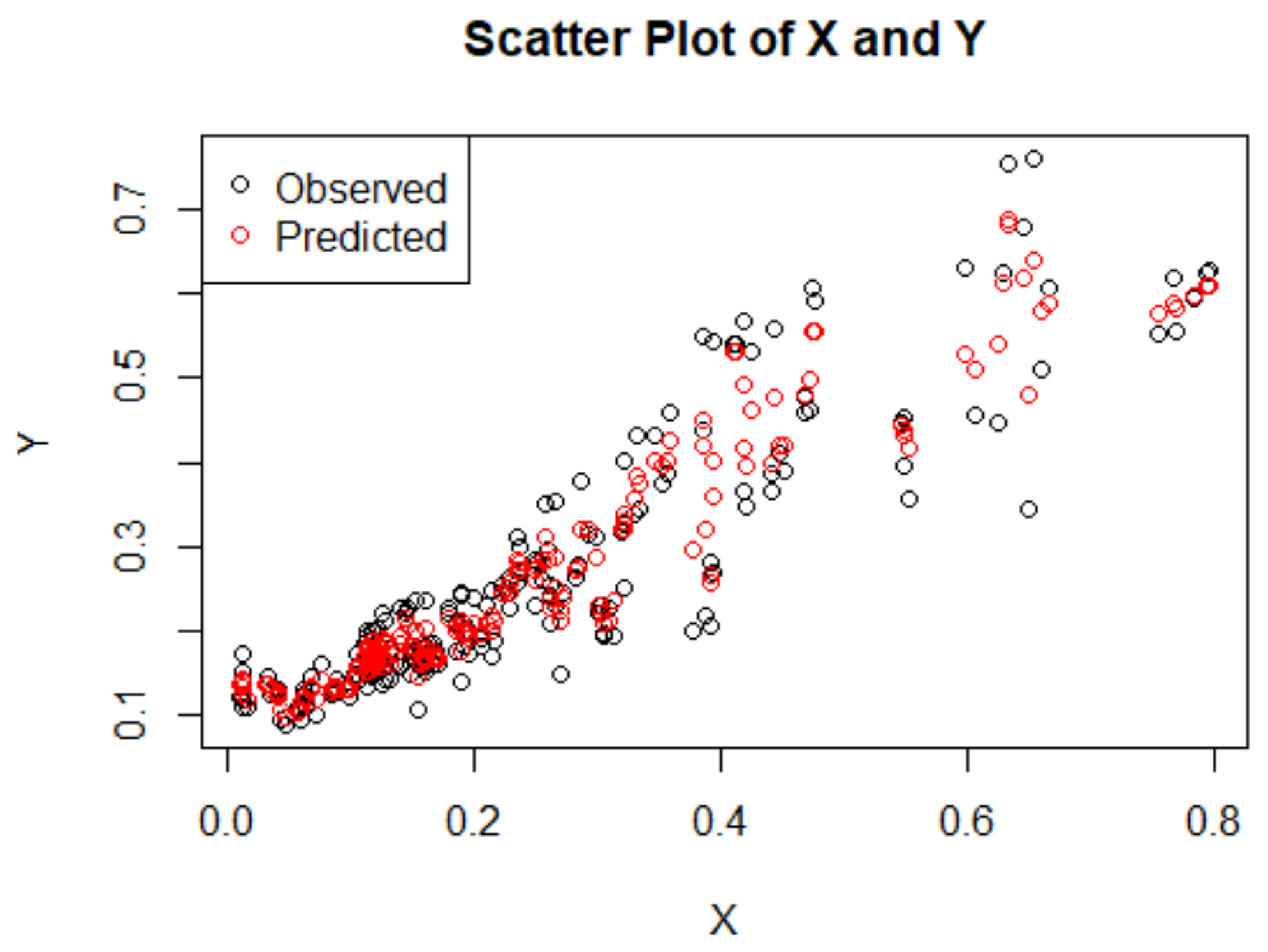
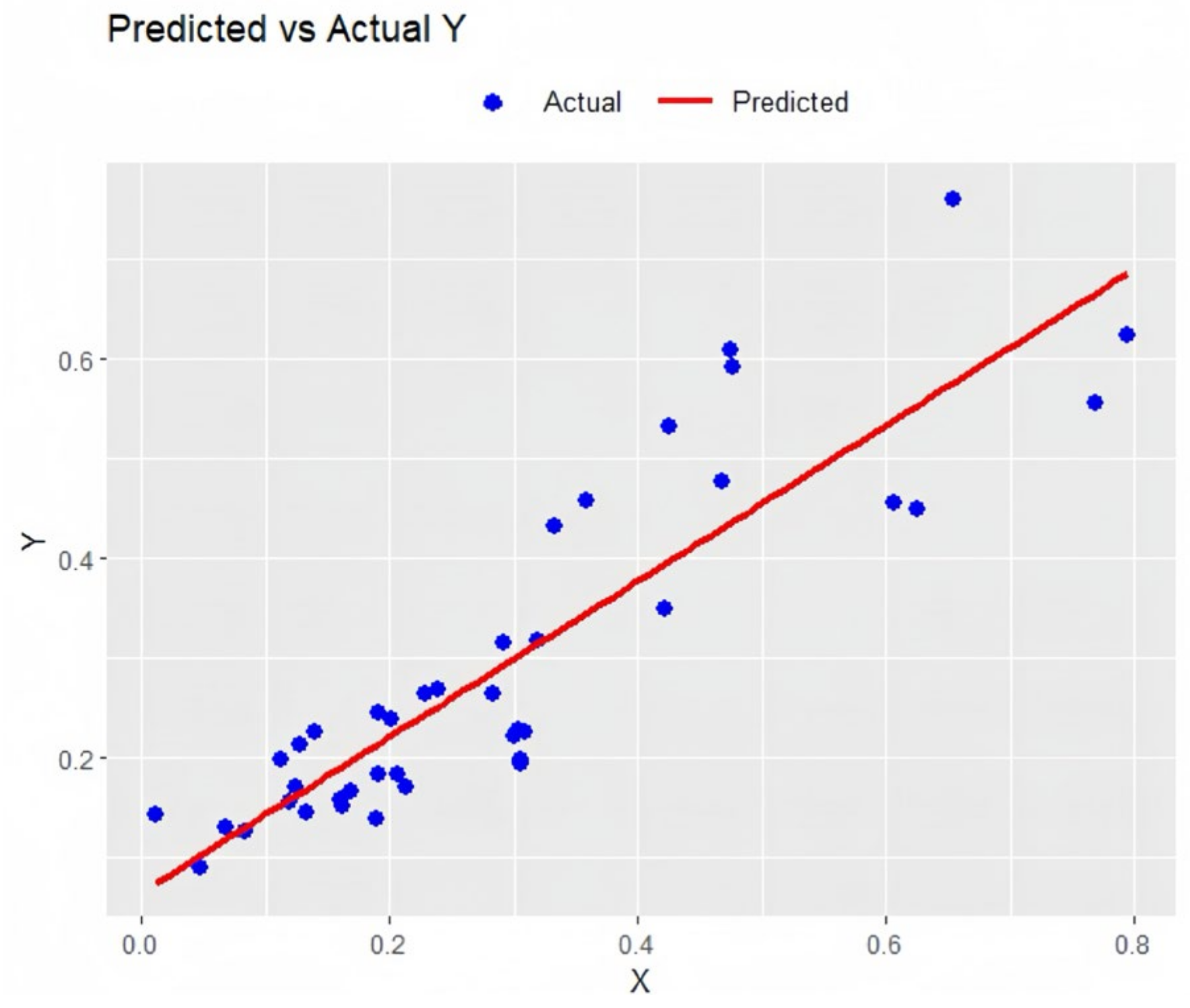

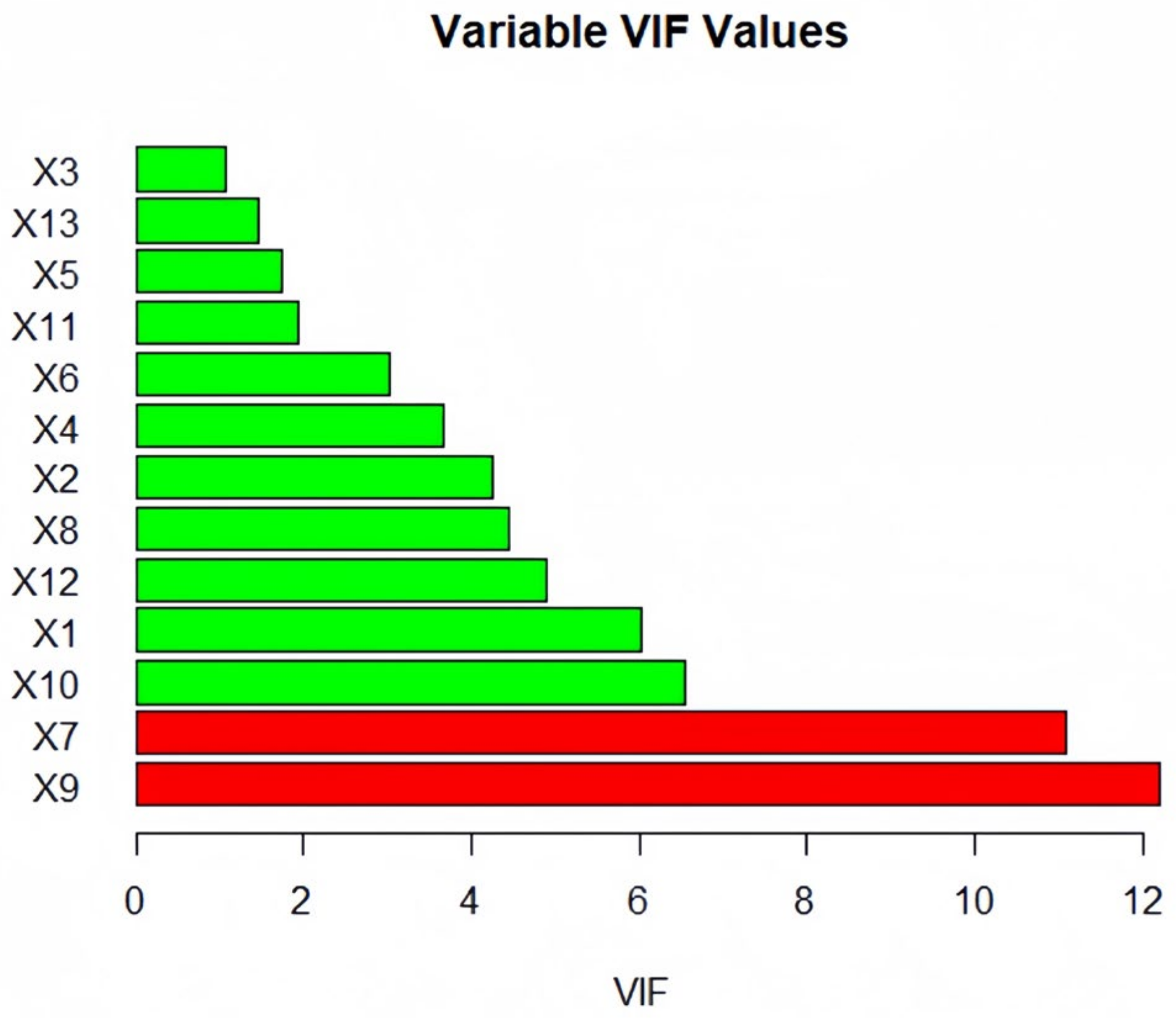
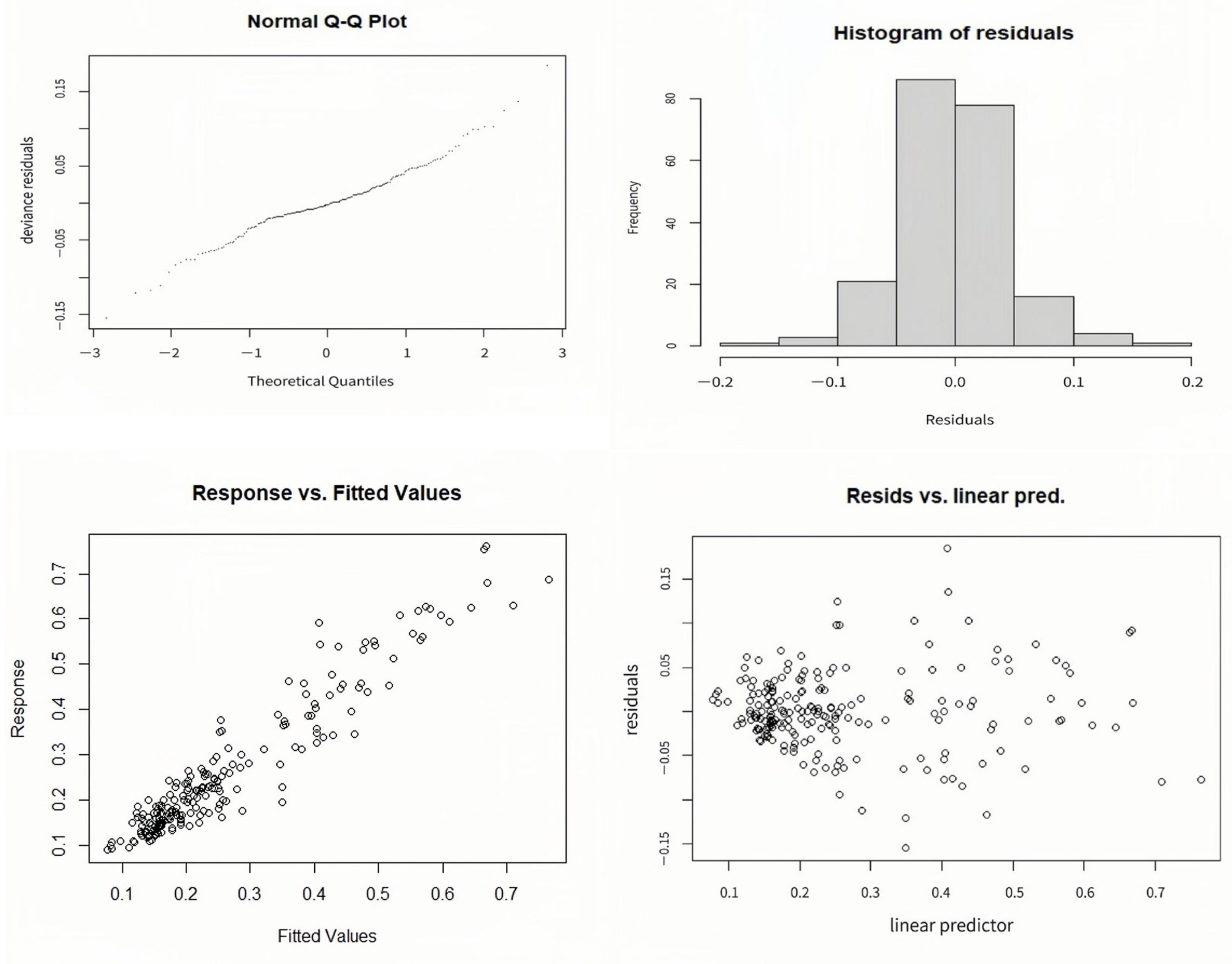
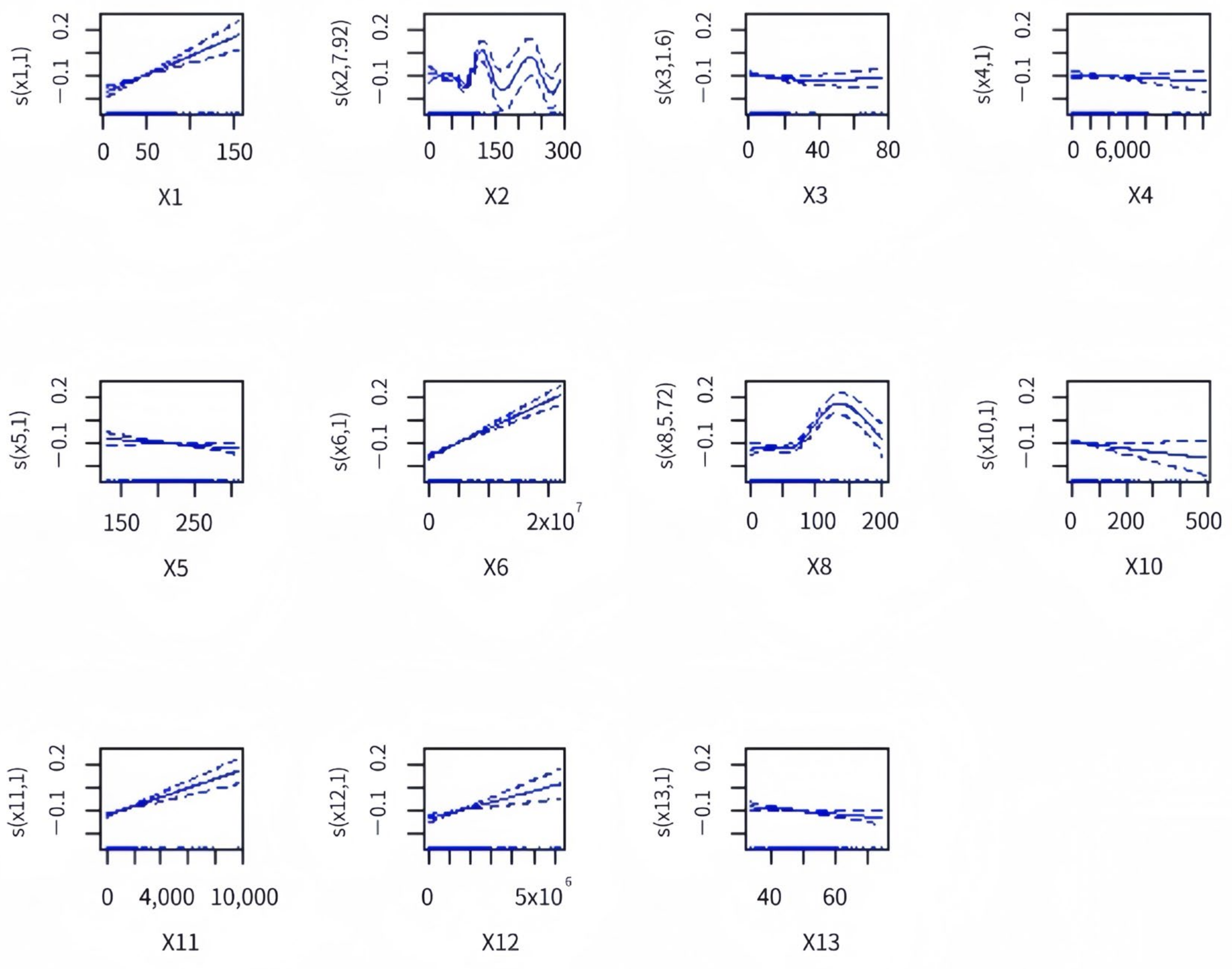
| Evaluation Objective | Primary Indexes | Secondary Indicators | Unit |
|---|---|---|---|
| Cold chain logistics development of fresh agricultural products (CCLFAP) | Participants | Number of employees in the logistics industry (NELI) | 10,000 people |
| Number of cold chain logistics enterprises (NCCLE) | -- | ||
| Number of cold-chain-related policies issued by the government (NCCPIG) | -- | ||
| Output of fresh agricultural products (OFAP) | 10,000 tons | ||
| Economic Benefits | Per capita consumption of fresh agricultural products (PCCFAP) | KG | |
| Trading volume of fresh agricultural products (TVFAP) | RMB 10,000 | ||
| Total cold chain logistics of agricultural products (TCCLAP) | RMB 100 million | ||
| The freight turnover of agricultural products transported by the cold chain (FTAPTCC) | Billion ton-km | ||
| Technical Level | Research and experimental development (R&D) personnel full-time equivalent (RTDSFTE) | Persons/year | |
| Number of cold chain logistics patent applications (NCCLPA) | -- | ||
| Infrastructure | Number of refrigerated vehicles (NRV) | -- | |
| Capacity of cold room (CCR) | Ton | ||
| Road density (RD) | Km per square km | ||
| Ecological environment (EE) | Ecological state | Per capita water resources (PCWR) | Cubic Meters/person |
| Sown area (SA) | Thousand hectares | ||
| Annual mean temperature (AMT) | Degrees centigrade | ||
| Ecological pressure | Discharge of major pollutants in wastewater (DMPW) | Ton | |
| Carbon emissions (CE) | Million tons of carbon dioxide | ||
| Ecological response | Nonhazardous disposal of domestic waste (HDCHG) | Million tons | |
| Sewage treatment capacity (STC) | Cubic meter (unit of volume) |
| Metric | Training Set | Test Set |
|---|---|---|
| R2 | 0.8779 | 0.81055 |
| MAE | 0.034091 | 0.045277 |
| RMSE | 0.050128 | 0.068023 |
| 2015 | 2016 | 2017 | 2018 | 2019 | 2020 | 2021 | |
|---|---|---|---|---|---|---|---|
| NELI | 0.48 | 0.77 | 0.79 | 0.79 | 0.66 | 0.57 | 0.57 |
| NCCLE | 0.43 | 0.65 | 0.66 | 0.72 | 0.57 | 0.53 | 0.49 |
| NCCPIG | -- | -- | -- | -- | -- | -- | -- |
| OFAP | 0.91 | 0.64 | 0.66 | 0.68 | 0.71 | 0.75 | 0.77 |
| PCCFAP | -- | -- | -- | -- | -- | -- | -- |
| TVFAP | 0.65 | 0.68 | 0.61 | 0.69 | 0.51 | 0.45 | 0.46 |
| TCCLAP | 0.71 | 0.85 | 0.87 | 0.87 | 0.74 | 0.67 | 0.71 |
| FTAPTCC | 0.83 | 0.54 | 0.57 | 0.57 | 0.46 | 0.4 | 0.49 |
| RTDSFTE | 0.4 | 0.78 | 0.79 | 0.81 | 0.65 | 0.56 | 0.6 |
| NCCLPA | -- | 0.72 | 0.75 | 0.78 | 0.58 | 0.48 | 0.41 |
| NRV | -- | 0.41 | -- | 0.4 | -- | 0.53 | 0.49 |
| CCR | 0.41 | 0.64 | 0.65 | 0.61 | 0.46 | 0.43 | 0.46 |
| RD | -- | -- | -- | -- | -- | -- | -- |
| 2015 | 2016 | 2017 | 2018 | 2019 | 2020 | 2021 | |
|---|---|---|---|---|---|---|---|
| NELI | 0.57 | 0.6 | 0.57 | 0.53 | 0.57 | 0.57 | 0.54 |
| NCCLE | 0.59 | 0.58 | 0.6 | 0.51 | 0.49 | 0.51 | 0.5 |
| NCCPIG | -- | -- | -- | -- | -- | -- | -- |
| OFAP | -- | -- | -- | -- | -- | -- | -- |
| PCCFAP | -- | -- | -- | 0.44 | 0.38 | 0.45 | 0.41 |
| TVFAP | -- | 0.39 | 0.43 | 0.4 | 0.39 | 0.43 | 0.41 |
| TCCLAP | 0.48 | 0.5 | 0.48 | 0.45 | -- | -- | -- |
| FTAPTCC | -- | -- | -- | -- | -- | -- | -- |
| RTDSFTE | 0.49 | 0.52 | 0.51 | 0.49 | 0.48 | 0.51 | 0.48 |
| NCCLPA | 0.41 | 0.52 | 0.44 | 0.49 | 0.47 | 0.47 | 0.41 |
| NRV | 0.43 | 0.45 | 0.41 | -- | 0.5 | 0.51 | 0.5 |
| CCR | -- | 0.58 | 0.56 | 0.47 | 0.44 | 0.47 | 0.47 |
| RD | -- | -- | 0.38 | -- | -- | 0.37 | 0.42 |
| 2015 | 2016 | 2017 | 2018 | 2019 | 2020 | 2021 | |
|---|---|---|---|---|---|---|---|
| NELI | 0.91 | 0.92 | 0.93 | 0.92 | 0.91 | 0.94 | 0.93 |
| NCCLE | 0.8 | 0.82 | 0.83 | 0.88 | 0.87 | 0.89 | 0.88 |
| NCCPIG | -- | -- | -- | -- | -- | -- | -- |
| OFAP | 0.55 | 0.53 | 0.53 | 0.53 | 0.52 | 0.58 | 0.57 |
| PCCFAP | 0.37 | -- | 0.39 | -- | 0.41 | 0.42 | -- |
| TVFAP | 0.77 | 0.78 | 0.76 | 0.73 | 0.76 | 0.75 | 0.71 |
| TCCLAP | 0.88 | 0.9 | 0.91 | 0.89 | 0.82 | 0.83 | 0.83 |
| FTAPTCC | 0.41 | 0.41 | 0.41 | 0.4 | 0.41 | 0.42 | 0.41 |
| RTDSFTE | 0.93 | 0.93 | 0.94 | 0.95 | 0.92 | 0.93 | 0.94 |
| NCCLPA | 0.8 | 0.91 | 0.9 | 0.92 | 0.86 | 0.89 | 0.82 |
| NRV | 0.43 | 0.45 | 0.43 | 0.54 | 0.55 | 0.89 | 0.88 |
| CCR | 0.65 | 0.78 | 0.78 | 0.74 | 0.73 | 0.78 | 0.77 |
| RD | -- | -- | -- | -- | -- | -- | -- |
| 2015 | 2016 | 2017 | 2018 | 2019 | 2020 | 2021 | |
|---|---|---|---|---|---|---|---|
| NELI | 0.92 | 0.93 | 0.94 | 0.93 | 0.92 | 0.93 | 0.92 |
| NCCLE | 0.81 | 0.86 | 0.86 | 0.87 | 0.84 | 0.88 | 0.86 |
| NCCPIG | -- | -- | -- | -- | -- | -- | -- |
| OFAP | 0.49 | 0.47 | 0.46 | 0.47 | 0.45 | 0.5 | 0.49 |
| PCCFAP | 0.4 | -- | 0.41 | 0.38 | 0.44 | 0.42 | -- |
| TVFAP | 0.68 | 0.69 | 0.68 | 0.68 | 0.71 | 0.67 | 0.63 |
| TCCLAP | 0.86 | 0.86 | 0.86 | 0.85 | 0.77 | 0.76 | 0.76 |
| FTAPTCC | 0.4 | 0.39 | 0.39 | 0.38 | -- | -- | -- |
| RTDSFTE | 0.9 | 0.91 | 0.91 | 0.94 | 0.91 | 0.92 | 0.92 |
| NCCLPA | 0.79 | 0.89 | 0.89 | 0.91 | 0.86 | 0.86 | 0.76 |
| NRV | 0.45 | 0.47 | 0.42 | 0.51 | 0.5 | 0.88 | 0.86 |
| CCR | 0.64 | 0.79 | 0.75 | 0.7 | 0.68 | 0.71 | 0.69 |
| RD | -- | -- | -- | -- | -- | -- | -- |
| S (.) | Edf | Ref.df | F | p Value |
|---|---|---|---|---|
| S (NELI) | 1.000 | 1.000 | 32.084 | 0.000 *** |
| S (NCCLE) | 7.920 | 7.920 | 8.222 | 0.000 *** |
| S (NCCPIG) | 1.597 | 1.597 | 0.950 | 0.229 |
| S (OFAP) | 1.000 | 1.000 | 0.765 | 0.383 |
| S (PCCFAP) | 1.000 | 1.000 | 2.856 | 0.092 * |
| S (TVFAP) | 1.000 | 1.000 | 109.983 | 0.000 *** |
| S (FTAPTCC) | 5.772 | 5.772 | 15.102 | 0.000 *** |
| S (NCCLPA) | 1.000 | 1.000 | 2.831 | 0.094 * |
| S (NRV) | 1.000 | 1.000 | 40.842 | 0.000 *** |
| S (CCR) | 1.000 | 1.000 | 13.748 | 0.001 *** |
| S (RD) | 1.000 | 1.000 | 3.893 | 0.049 ** |
Disclaimer/Publisher’s Note: The statements, opinions and data contained in all publications are solely those of the individual author(s) and contributor(s) and not of MDPI and/or the editor(s). MDPI and/or the editor(s) disclaim responsibility for any injury to people or property resulting from any ideas, methods, instructions or products referred to in the content. |
© 2024 by the authors. Licensee MDPI, Basel, Switzerland. This article is an open access article distributed under the terms and conditions of the Creative Commons Attribution (CC BY) license (https://creativecommons.org/licenses/by/4.0/).
Share and Cite
Zhang, Y.; Fan, X.; Cao, Y.; Xue, J. Exploring Symbiosis: Innovatively Unveiling the Interplay between the Cold Chain Logistics of Fresh Agricultural Products and the Ecological Environment. Agriculture 2024, 14, 609. https://doi.org/10.3390/agriculture14040609
Zhang Y, Fan X, Cao Y, Xue J. Exploring Symbiosis: Innovatively Unveiling the Interplay between the Cold Chain Logistics of Fresh Agricultural Products and the Ecological Environment. Agriculture. 2024; 14(4):609. https://doi.org/10.3390/agriculture14040609
Chicago/Turabian StyleZhang, Yingdan, Xuemei Fan, Yingying Cao, and Jiahui Xue. 2024. "Exploring Symbiosis: Innovatively Unveiling the Interplay between the Cold Chain Logistics of Fresh Agricultural Products and the Ecological Environment" Agriculture 14, no. 4: 609. https://doi.org/10.3390/agriculture14040609
APA StyleZhang, Y., Fan, X., Cao, Y., & Xue, J. (2024). Exploring Symbiosis: Innovatively Unveiling the Interplay between the Cold Chain Logistics of Fresh Agricultural Products and the Ecological Environment. Agriculture, 14(4), 609. https://doi.org/10.3390/agriculture14040609






